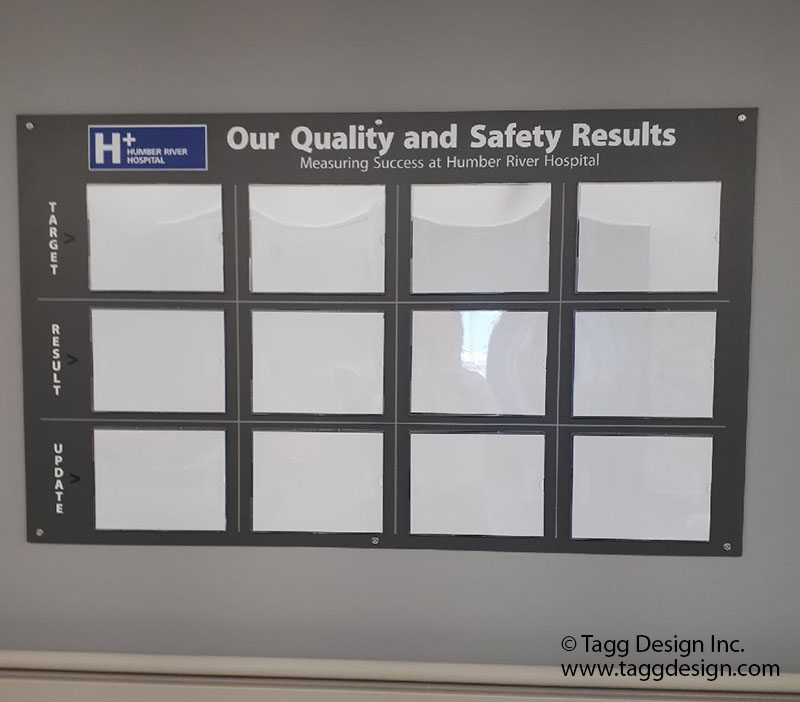
What does “sustainable” really mean? Simply put, it means that what is being done can be kept up.
Old buildings such as those owned by the Government of Canada are often a source of beauty and local history, but come with problems stemming from their now out-of-date construction materials. Lead content in pipes and paints are one common example, but even more serious are in buildings containing asbestos.
That’s how long has passed since the first Tagg Clean-Hands® Sanitizing Station was made to help hospitals deal with the aftermath of the SARS epidemic, and in that time we have learned a few things about what works in hand hygiene promotion and what doesn’t.
So, with May 5th coming up (The World Health Organization’s World Hand Hygiene Day) we thought we’d share our secrets and observations!
Read more ›
When it comes to healthcare, we do more than just hand sanitizing stations and infection prevention signage. We designed and produced several of these custom sign boards for Humber River Hospital in 2018, and they were very well received.
Read more ›

First – this isn’t one of our Tagg Clean-Hands® Sanitizing Stations, but unlike most stands you see around it shares a design element: the stop sign.
That stop sign is the single most important element in an entrance-way hand sanitizing station. It draws attention to the sanitizer, sets expectations for use and is visible over people’s heads – when it’s not slowly being covered up and obscured like this one.
Why did things get to this state? What impression does this give about the bank’s dedication to the health and safety of its clients and staff?
And most curiously, how long until that poor stop sign disappears completely?
At this stage of the COVID-19 pandemic, we are all starting to see the light at the end of the tunnel. Facilities are starting to reopen to the public, and overall prioritizing doing so safely. What we’ve seen, however, is that facilities of all kinds are ignoring the most important concept in public safety infrastructure: pull power.
Simply placing small sanitizer dispenser stands near the entrances and hoping people notice them (the first step towards actually using them) is not the way to go about it. We’ve written about this before, and the WHO agrees with us.
What’s missing is the ability to be immediately seen and understood as being hand sanitizing stations from a distance and over the heads of crowds.
Read more ›You might remember that back in 2003, there was an outbreak of a new, deadly type of Coronavirus. We called it SARS, and it threatened to become a major new disease. Some cities (like Toronto, where we live) were hit harder than others, and it eventually died off but left a lasting impression that our infection control efforts needed work.
What did we see happen in regards to infection prevention at facility entrances over time?
Read more ›
As we write this, the COVID-19 response in Canada is in its fifth month, and uncertainty is still foremost among many people, who above all want an answer to the question of when all this disruption will be over.
Read more ›
It’s been a while, hasn’t it?
Since we last posted, lots of things have happened, not the least of which is that the world’s infection prevention and control communications have been getting seriously tested in an all-encompassing, massive way. Global pandemics will do that.
More importantly, hand sanitizing infrastructure has been getting a great deal of scrutiny.
Read more ›
Recent Comments